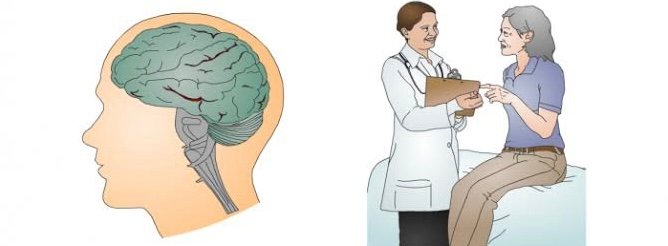It is a rare neurological disorder that affects the peripheral nervous system (PNS). It is a condition that can develop rapidly and lead to severe muscle weakness or even paralysis. In this article, we will explore the various aspects of Guillain-Barré syndrome and shed light on its causes, symptoms, diagnosis, and treatment.
What is Guillain-Barré Syndrome?
illain-Barré syndrome, often abbreviated as GBS, is an autoimmune disorder that occurs when the body’s immune system mistakenly attacks the peripheral nervous system. The peripheral nervous system consists of the nerves outside the brain and spinal cord. This disorder is characterized by the inflammation of these nerves, which disrupts the communication between the brain and the muscles.
The Perplexing Onset of Guillain-Barré Syndrome
One of the perplexing aspects of Guillain-Barré syndrome is its unpredictable onset. In many cases, the syndrome develops after a respiratory or gastrointestinal infection. It is believed that the body’s immune response to these infections triggers an abnormal immune reaction, leading to the development of GBS. However, the exact cause of this autoimmune response is still not fully understood by the medical community.
Another intriguing aspect of Guillain-Barré syndrome is the fact that it can affect individuals of all ages, genders, and ethnicities. Although it accounts for only a small percentage of all neurological disorders, its impact on individuals can be life-altering.
The Burstiness of Symptoms
The symptoms associated with Guillain-Barré syndrome often appear suddenly and progress rapidly within a matter of days or weeks. The most common initial symptom is muscle weakness, which typically begins in the legs and spreads to the arms and upper body. This weakness can vary in severity, ranging from mild difficulty walking to complete paralysis.
In addition to muscle weakness, individuals with GBS may also experience tingling or numbness in their extremities, difficulty with coordination and balance, and in some cases, even respiratory failure. The burstiness of symptoms can make diagnosis challenging, as the presentation can vary from person to person.
Diagnosing Guillain-Barré Syndrome
Diagnosing Guillain-Barré syndrome involves a combination of medical history evaluation, physical examination, and various tests. Since the syndrome shares symptoms with other neurological disorders, ruling out alternative diagnoses is crucial.
Personal Experience with Diagnostic Tests
When I was diagnosed with Guillain-Barré syndrome, my doctors performed a spinal tap, also known as a lumbar puncture, to analyze the cerebrospinal fluid. This test helps determine if there are any abnormal immune cells or proteins present, which can indicate an autoimmune response. Additionally, nerve conduction studies and electromyography were conducted to assess the electrical activity in my muscles and nerves.
The diagnostic process can be both physically and emotionally challenging. It requires patience and perseverance, as multiple tests may be required to confirm a diagnosis. However, the process is necessary to ensure accurate treatment and management of the condition.
Treatment and Management of Guillain-Barré Syndrome
There is currently no known cure for Guillain-Barré syndrome. However, various treatment options are available to manage the symptoms, promote recovery, and reduce complications.
Predictable Treatment Approaches
The primary treatment for Guillain-Barré syndrome involves supportive care and medical interventions. Hospitalization is often required to closely monitor respiratory function and provide necessary medical support. In severe cases, a breathing machine may be needed to assist with breathing.
To reduce the autoimmune response, intravenous immunoglobulin (IVIG) or plasma exchange therapy may be administered. IVIG involves the infusion of healthy antibodies into the bloodstream to neutralize the abnormal immune response. Plasma exchange, on the other hand, involves removing the patient’s blood, separating the plasma containing harmful antibodies, and replacing it with new plasma.
Physical therapy plays a crucial role in the management of Guillain-Barré syndrome. It involves exercises to improve muscle strength, coordination, and mobility. Occupational therapy and speech therapy may also be recommended based on the individual’s needs.
Conclusion
Guillain-Barré syndrome presents numerous challenges, both for those affected by it and for the medical community striving to understand and treat it. While the cause remains elusive, improved diagnostics and advancements in treatment options offer hope for individuals with this disorder.
If you or someone you know experiences any of the symptoms associated with Guillain-Barré syndrome, it is essential to seek medical attention promptly. Early diagnosis and intervention can greatly improve the chances of recovery and minimize the potential long-term effects of this perplexing and unpredictable syndrome.
“GBS may be a perplexing and unpredictable condition, but with proper medical care and support, individuals can overcome the challenges it presents.”
Reference
https://www.who.int/news-room/fact-sheets/detail/guillain-barr%C3%A9-syndrome



